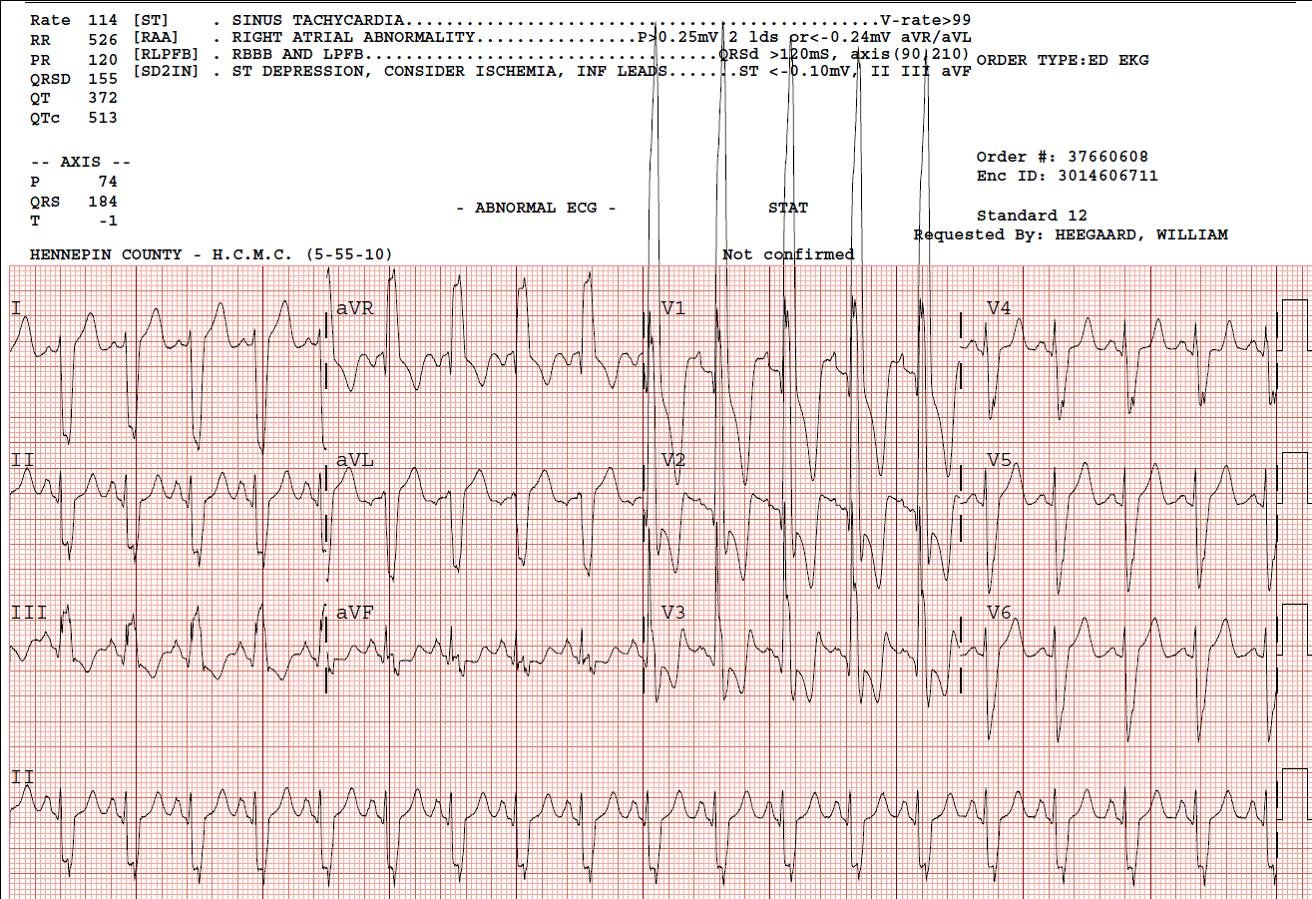This diabetic patient with the ECG below was brought in by medics confused, tachycardic, and hyperglycemic, Kussmauling. The computerized ECG algorithm diagnosed Acute MI (I’m not sure why).
 The ECG is diagnostic of hyperkalemia, with QRS of 180 ms. The QRS improved immediately after giving 2 doses of Calcium gluconate. K returned at 7.3, with a pH of 6.91, HCO3 of less than 3. After a total of 5 doses of Ca gluconate, 6 doses of bicarb, 4 liters of fluid, and insulin, this patient with extremely severe diabetic ketoacidosis stabilized. He had some demand ischemia, with maximum troponin of 1.5, but there was no acute coronary syndrome.
The ECG is diagnostic of hyperkalemia, with QRS of 180 ms. The QRS improved immediately after giving 2 doses of Calcium gluconate. K returned at 7.3, with a pH of 6.91, HCO3 of less than 3. After a total of 5 doses of Ca gluconate, 6 doses of bicarb, 4 liters of fluid, and insulin, this patient with extremely severe diabetic ketoacidosis stabilized. He had some demand ischemia, with maximum troponin of 1.5, but there was no acute coronary syndrome.
His ECG from the next AM is shown below; the QRS is now less than 120 ms.




How does calcium gluconate help hyperkalemia. I nkow we always give it, and we are told that it helps stabilize cell membranes. Is there more to it? Does it force K back into cells?
Calcium's mechanism of action is not by forcing K back into the cell. It is complex and beyond the scope of this blog, but a very nice explanation can be found here:
http://www.ncbi.nlm.nih.gov/pmc/articles/PMC1413606/
I see that they treated this patient with calcium gluconate. However, the company I work for only carries calcium chloride. Would that make any difference?
Calcium Choride is fine. You just have to be careful to have a good IV because if it infiltrates, it causes tissue damage. 1g CaCl = 3g CaGluconate (1 amp = 3 amps)